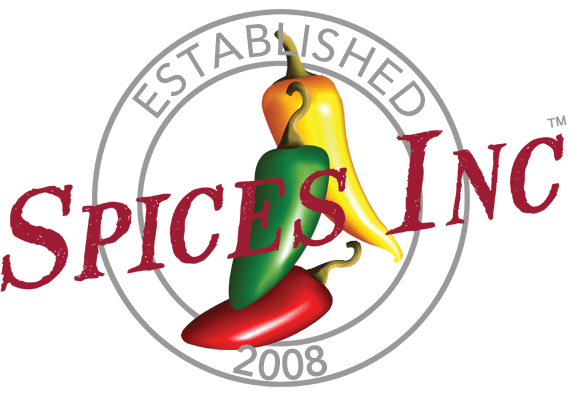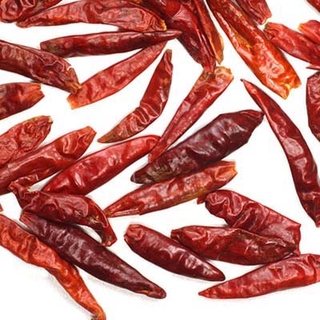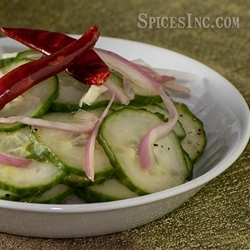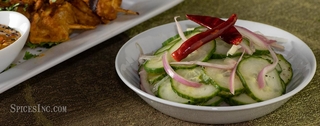Tien Tsin Chiles
Tien Tsin Chiles
Tien Tsin Chiles (TYEN sin), Capsicum annuum, are medium to hot chiles, measuring 10,000-60,000 Scoville Heat Units (SHU). They are also called tien tsin pepper, Chinese red pepper or tien tsin chile peppers. Tien Tsin chiles are bright red in color, slender, 1" to 2" in length and ¼" to ½" wide. They are very light and there are approximately 40 chiles per ounce.
The name Tien Tsin is derived from Tientsin, their native province in China. Also known as Tianjin, Tientsin is located in northern China, bordering the Bohai Sea. Tientsin is the name for both the city and the province and is often thought of as the gateway to Beijing, thanks to the major seaport located there.
These chiles are often purchased by Mexican restaurants, cafes, bagel and breakfast shops, bar and grills, seasoning companies, olive oil shops, breweries and distributors.
Flavor Profile
Mostly neutral with a musty, spicy aroma.
Heat Level
Tien Tsin Chiles are considered a medium heat chile, measuring 10,000-60,000 on the Scoville heat unit scale.
How to Use
Tien Tsin peppers chilies are mainly used as a heat source. They're a fixture in Hunan and Sichuan dishes and are often used whole to spice soups and stir fries. Add to Kung Pao Chicken for heat and, if they’re left whole, presentation. They are terrific in General Tso's Style Chicken. Serve a spicy condiment when you put them in Cucumber Relish. Because of their slim, short shape, Tien Tsin peppers are exceptional chiles for creating chili oils or hot pepper vodkas. They leave beautiful heat and imbue infusions with a rich red color.
| Also Called | Tien tsin pepper, Chinese red pepper or tien tsin chile peppers |
| Species | Capsicum annuum |
| Ingredients | Whole tien tsin chile |
| Flavor Profile | Mostly neutral with a musty, spicy aroma |
| Scoville Heat Units | 10,000-60,000 SHU |
| Recommended Uses | Add heat to meat and rice dishes, soups, stir fries, infusions |
| Cuisine | Chinese, Mexican |
| How To Store | Airtight container in a cool, dark place |
| Shelf Life | 1-2 Years |
| Country of Origin | China |
Nutrition Facts
Serving Size1 chile, 0.5g
Amount Per Serving
Calories2
% Daily Value*
Total Fat0g0%
Saturated Fat0g0%
Trans Fat0g
Polyunsaturated Fat0g
Monounsaturated Fat0g
Cholesterol0mg0%
Sodium0.2mg0%
Total Carbohydrate0.3g0%
Dietary Fiber0.1g1%
Total Sugars0.1g
Added Sugars0g0%
Sugar Alcohol0.0g
Protein0.1g0%
Vitamin D0mcg0%
Calcium1mg0%
Iron0mg0%
Potassium10mg0%
*The % Daily Value (DV) tells you how much a nutrient in a serving of food contributes to a daily diet. 2,000 calories a day is used for general nutrition advice. These values were calculated and therefore are approximate. For more accuracy, testing is advised.



